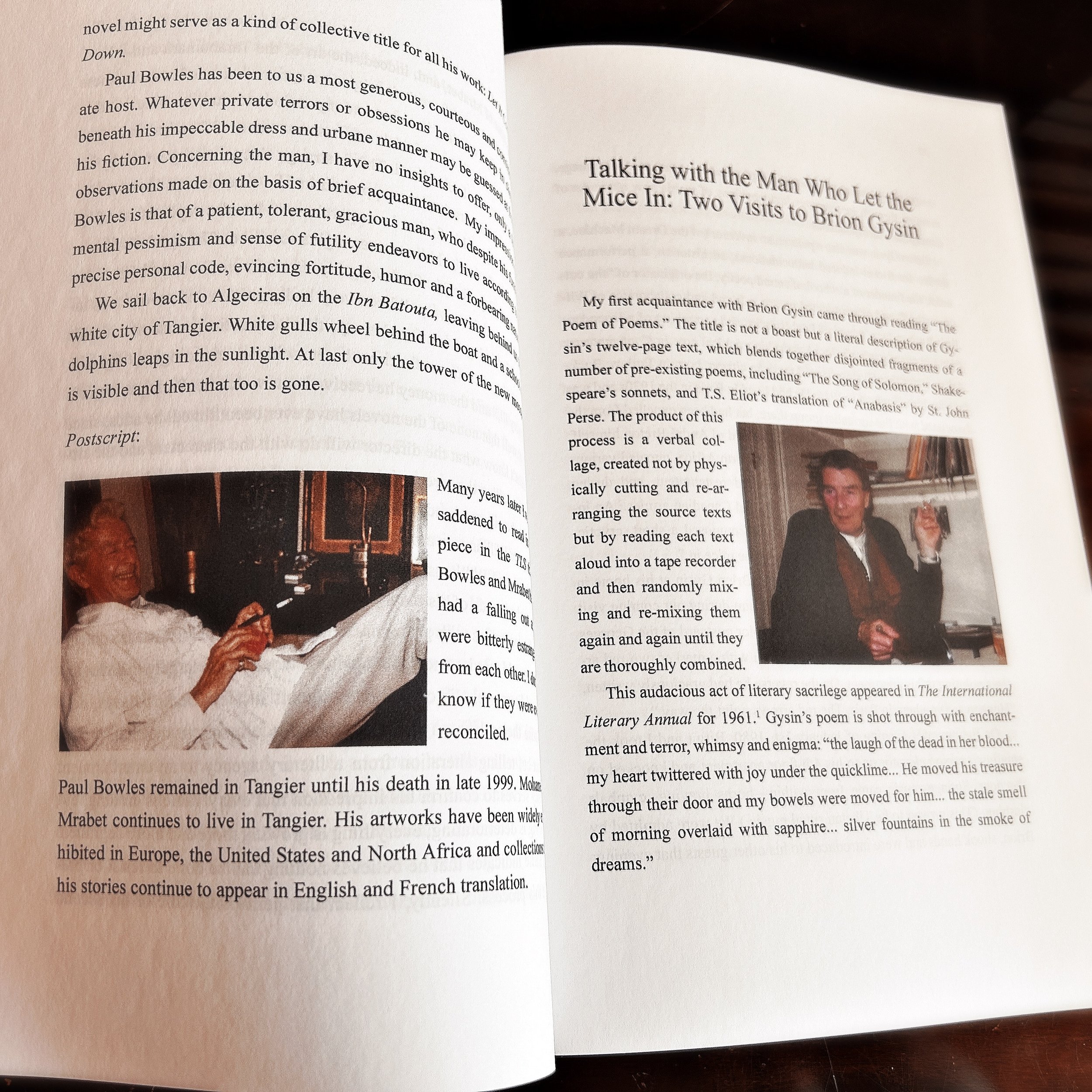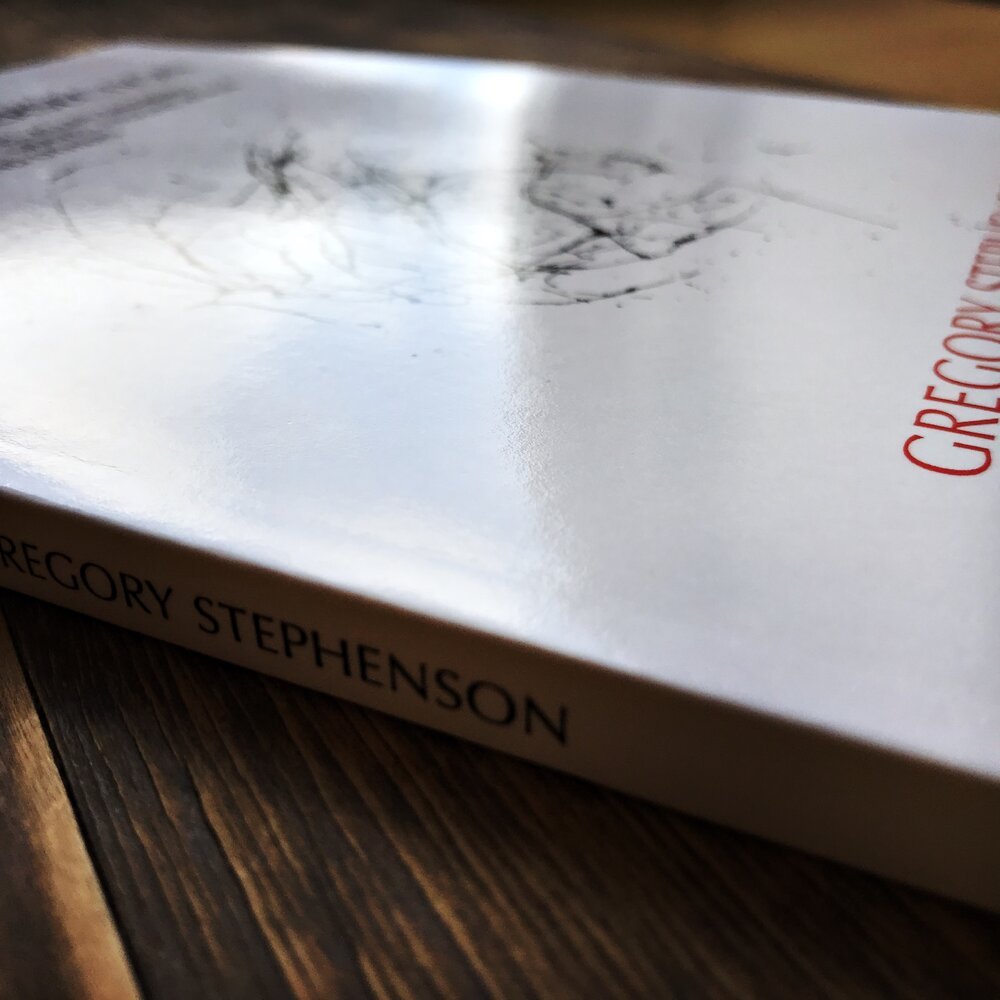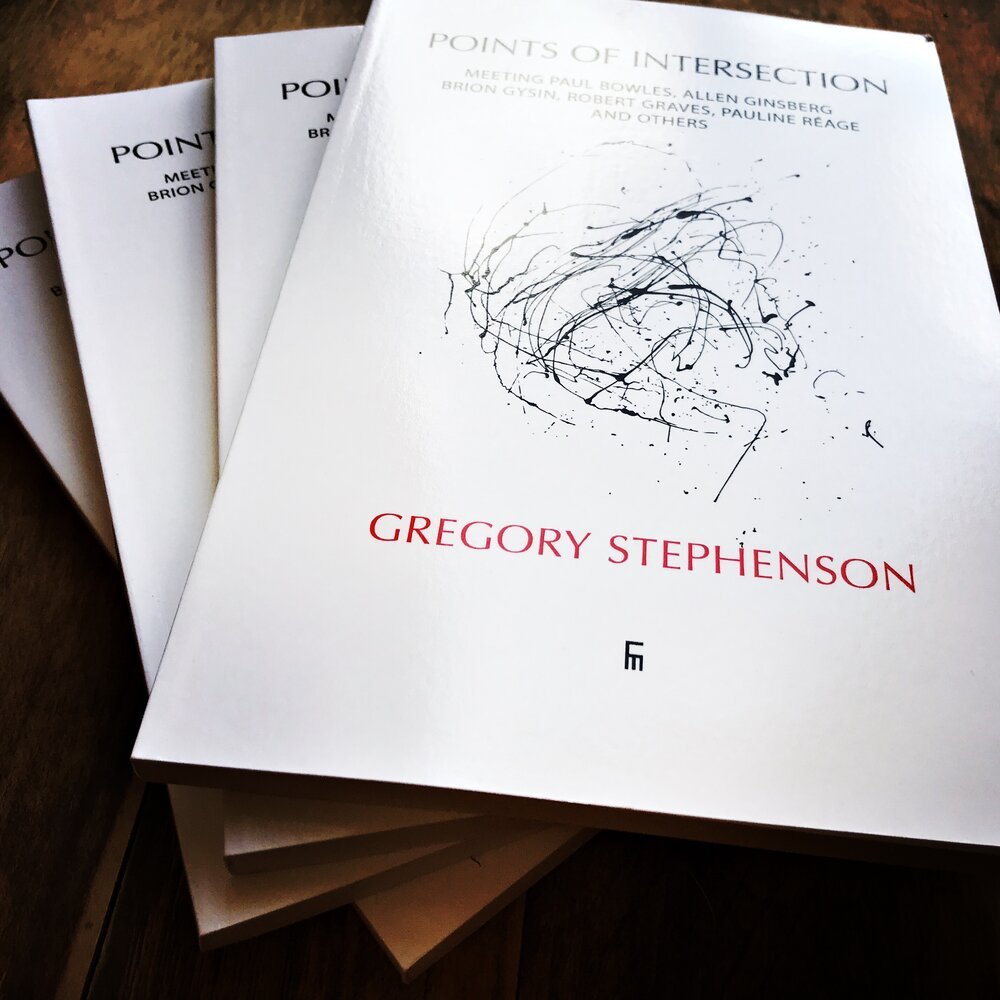POINTS OF INTERSECTION
POINTS OF INTERSECTION: MEETING PAUL BOWLES, ALLEN GINSBERG, BRYON GYSIN, ROBERT GRAVES, PAULINE REAGE, AND OTHERS
GREGORY STEPHENSON
Tangier. Déya. Dieppe. Paris. Copenhagen. Chasing the fading contours of the past. Pursuing points of intersection. Encounters with aging literary figures and surviving witnesses to history. Excavating printed artifacts in the back rooms of used book shops. Locating lingering traces: a bullet hole, a logo, graffiti, items of equipment lost or discarded.
Conversations with Paul Bowles & Mohammed Mrabet, Brion Gysin, “Pauline Réage,” Robert Graves, Maurice Girodias, Berthe Cleyrergue, Edouard Roditi, Allen Ginsberg & Peter Orlovsky.
6×9” | B&W | 180 pp
ISBN 978-8792633408
CATEGORY
Literary criticism
EDITION
Standard paperback 2018 | $21
NOTE
Essays





REVIEWS
This book is on the surface a series of memorable encounters with 8 remarkable figures, lions of the literary and publishing worlds caught in the reflective rays of autumnal revery. Paul Bowles, Bryon Gysin, Robert Graves, Pauline Reáge, Allen Ginsburg and Peter Orlovsky, avatars of a modernist aesthetic that becomes more marginalized with each passing year, each inexorable advance of the informational superhighway. And like Henry Miller’s “The Books In My Life.” It is a literary name-dropper’s delight: figures like Mohammed Mrabet, John LaTouche, Carl Van Vechten, André Pieyre de Mandiargues and Jacques Cazotte jostle with others who were perhaps no more talented but have become more familiar to us by virtue of changing literary fashions. “Points of Intersection” brings to life the kif-scented and tagine-infused Tangiers of Paul Bowles and the bucolic Deyá of Robert Graves with a descriptive authority reminiscent of Lawrence Durrell. But beyond these evocations of people and places, “Points Of Convergence” represents one of the most poignant and insightful analyses of temporospatial dislocation since Henry Adams. A statue of Kierkegaard confronts an American Forces Network broadcast of a baseball game. Flea markets and copper-tinted gargoyles mark the demise of The International Herald Tribune and the decline of the dank used book stores where Olympia Press titles lurked next to Overseas Editions in spider-infested warrens—to be replaced by the currently fashionable Copenhagen wine bars and coffee shops where texters practice their ritualized dances of mutual estrangement. Yes, Gregory Stephenson is in love with what passes, but he also knows that nothing is ever wasted that leaves a memory. His is not a self-pitying longing for lost personal connections , but the rueful estrangement of the born romantic who never belongs anywhere but occupies a permanent residence in the realm of the imagination. A splendid book that deserves the attention of anyone who cares about 20th century literature. – PHOENIX BURNING, Amazon

